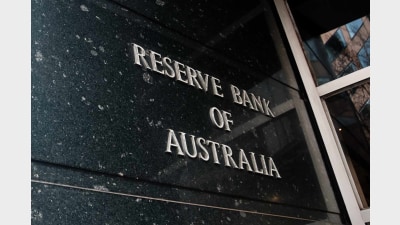Why you should diversify interest rate risk


In a recent speech in Paris, US Federal Reserve chair Jerome Powell described a series of shifts toward lower inflation, productivity growth and global interest rates. That was not long after Reserve Bank of Australia Governor Phillip Lowe stated that “the coexistence of low inflation and low unemployment does appear to be highly persistent”.
There are strong structural forces contributing to low inflation in major markets, and to increase inflation and economic growth the strategy of central banks around the world has been to cut interest rates and flood the markets with liquidity in the form of quantitative easing (QE).
Whilst Australia has not yet gone down the path of the latter, it is somewhat likely that their next move may be a form of QE. Only last year did the Fed attempt to normalise interest rates and was then forced into a backflip when markets reacted negatively.
A handful of European central banks along with Japan currently have negative nominal interest rates, with the European Central Bank (ECB) rate currently also zero, and there is now $13 trillion of debt trading on a negative yield. So, investors are effectively paying governments to own their debt! Even with low rates of inflation, most developed markets now have negative real interest rates, with the exception of the US, which is currently marginally positive.
Negative interest rates mean that banks pay for holding reserves with their central bank. This promotes the idea that banks would then rather lend to businesses and individuals who are supposed to reinvest or spend the money. This in turn should generate growth and inflation when the money is put to more productive use. Of course, there are other reasons to lower interest rates, such as to devalue a currency in order to make exports more competitive. What is important to understand is how negative interest rates affect markets and asset classes and what are the implications for investors (and savers).
Low or negative interest rates also end up depressing bond yields. This has had a flow on effect as investors continue to seek higher yields in investment grade bonds and then move progressively down the credit spectrum to the high yield and loans markets, reducing credit spreads. While credit spreads have recovered from the sell-off in late 2018, investors need to ask themselves if they are getting adequately rewarded for the additional risk they are taking on.
While the impact of low and negative rates on the fixed interest asset class are reasonably well covered and understood, it is the implications for other asset classes that are having a bigger impact in the way investors construct portfolios. The effect on an investment of a lower interest rate environment depends on the duration of the asset. Long duration assets such as equities and property are much more sensitive to changing interest rates and it is these assets that have been the biggest beneficiary of the fall in rates as the corresponding discount rates applied to these investments have also fallen.
Keep in mind that the level of interest rates affects the price of every asset, without considering the expected level of future interest rates, investors can’t have a view on how expensive or cheap an asset class is. So, with the market predicting that inflation, and hence interest rates, will be subdued for many years, all else equal, this should support the higher valuations seen in most asset classes. Simply stating that equities or property is expensive relative to history ignores that valuations should be higher due to the lower discount rates being applied.
Investors should remember that any unexpected rise in inflation would likely see the market suddenly pricing in higher interest rates and this would be highly disruptive for most asset classes, not just equities and fixed interest. Compounding the problem for investors is that we now have bond yields at historic lows, so their ability to immunise portfolios from a sell-off in risk assets is likely to be considerably lessened and it is for that reason we believe the asset class is very unattractive.
However, it is clear that the valuations of a broad range of risk assets are trading at levels well above historical norms. So, investors need to consider whether the valuations are at levels that are consistent with lower interest rates and whether they believe that the risk-reward trade-off still makes sense.
What does all this mean for investors? Firstly, they should expect lower returns going forward – potentially materially lower. The bond market is now pricing in an inflation outlook that has shifted significantly in the last few months and combined with the secular influences of trade wars and protectionism, there remain few areas that look attractive on a risk adjusted basis.
In the long-term, diversification still matters including diversification of interest rate risk and diversification away from traditional beta benchmarks. There is now greater uncertainty over the longer-term outlook with the markets in unchartered territory as central banks continue with policy experimentation. Despite recent headwinds, active management should remain important as the influence of monetary policy has different impacts on the relative components of indices.
Recommended for you
High risk, high return assets will become dangerous options for superannuation funds under the Federal Government’s planned $3 million superannuation changes, writes Brad Twentyman.
Economic policy can no longer ignore the macroeconomic impacts of Australia's superannuation system and the emerging policy implications, writes Tim Toohey.
In an age where climate concerns and social consciousness dominate headlines, it’s no surprise that investors are increasingly seeking investments that align with their values, writes Simon O’Connor.
How profit-for-member superannuation funds can embed 'commerciality with a heart' and marry a member-first culture with commercial outcomes.














Add new comment